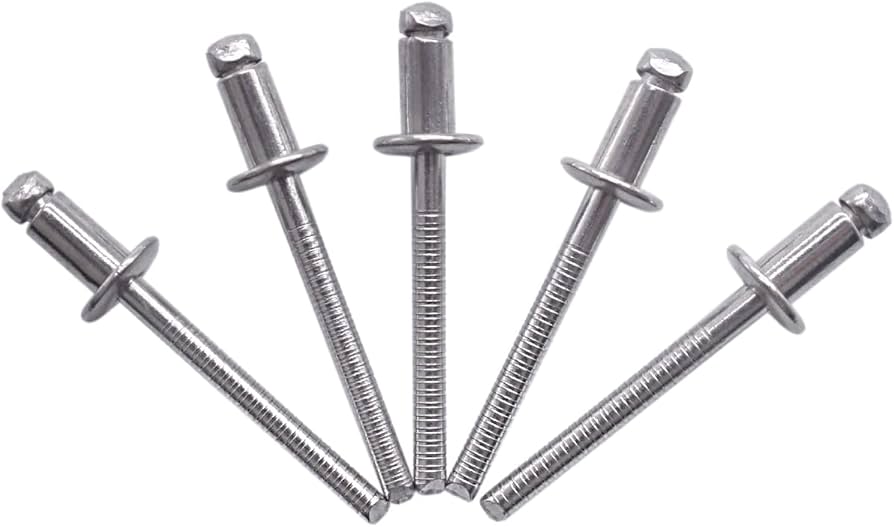MORE
Structural Rivets: The Backbone of Robust Fastening Solutions

The integrity of connections is paramount in construction and manufacturing. Various fastening solutions are employed to ensure the robust assembly of components, each designed to withstand different loads and forces. Among these, structural rivets have emerged as a preferred choice for their strength and reliability.
The Critical Role of Structural Rivets
Structural rivets are specialized fasteners designed to hold together materials in applications where reliability and safety cannot be compromised. They are principally used in scenarios that demand strong, permanent, and vibration-resistant joints. The key industries that benefit from these rivets include aerospace, automotive, construction, and heavy engineering.
Their contribution to the construction sector, in particular, cannot be understated. When erecting large structures such as bridges, towers, and buildings, the integrity of each fastened point is critical. Unlike other fastening methods, structural rivets provide a unique combination of security and durability that few other fasteners can match.
Advantages of Using Structural Rivets
The superiority of structural rivets lies in their design and the way they create a bond between the surfaces they join. Once installed, these rivets expand, filling the drill hole and creating a tight fit. This not only provides exceptional shear and tensile strength but also distributes the load across a wider area.
One of the reasons for their widespread adoption is the ease of installation. They can be fastened quickly and efficiently with the use of specialized riveting tools, reducing assembly time and labor costs. This speed does not compromise quality, as the joints they form are permanent and highly dependable.
Moreover, structural rivets are designed to be tamper-proof, which enhances the security aspect of the structures they compose. They lack the removable parts found in other fasteners, such as screws or bolts, which means once they are installed, they are not meant to be removed. This feature provides additional safety in critical structures where tampering could lead to catastrophic failure.
Diversity in Riveting Solutions
It’s essential to note that fastening solutions should be selected based on the specific requirements of a project. The surrounding environment, the materials being joined, and the magnitude of loads being borne are all decisive factors. In some situations, an adhesive may be more appropriate, especially in cases where a temporary bond is required or disassembly could be a future requirement.
Adhesive solutions offer versatility and can serve as a complement to mechanical fasteners like rivets. They can fill gaps, distribute stress over a broader area, and provide some flexibility to absorb vibrations. They are often used to attach components that require an aesthetic finish, as they do not require any protrusions or markings on the surface.
Complementary Fastening Solutions: Nutserts
Another valuable addition to the fastening repertoire is nutserts. These are threaded inserts that provide a female thread to materials that are otherwise too thin to be tapped. Nutserts enhance the capabilities of materials by allowing them to accommodate threaded fasteners, thereby expanding the range of possible connections and applications.
Nutserts are particularly useful in instances where a product needs to be disassembled and reassembled multiple times. This could include servicing parts or accessing components within a structure. Their functionality pairs well with structural rivets in complex assemblies where different types of connections are necessary.
Selection Criteria for Fasteners
The selection of fasteners is not a decision to be taken lightly, and it often involves a detailed analysis of the application needs. When considering structural rivets, engineers and designers look for attributes such as body diameter, grip range, shear and tensile strength, material compatibility, and corrosion resistance.
For applications that encounter constant vibrations or dynamic loads, rivet selection becomes even more critical. The ability of a rivet to maintain its grip under such conditions is a testament to its quality and the engineering that underpins it. The correct choice ensures longevity and safety, particularly in transportation or structural frameworks.
Installation Considerations
Proper installation of structural rivets requires precise techniques and tools. Workers need to be trained in using riveting tools and following protocols that match the specific type and size of rivet being used. Incorrect installation can lead to fastener failure, which in turn can compromise the entire structure.
The creation of the rivet hole is just as important as the fastening itself. Accuracy in drilling ensures the rivet fits snugly within the hole, allowing it to expand properly and create the desired bond. Consistency in these processes guarantees the structural integrity of the connections throughout the life of the assembly.
The Future of Fastening
As technology progresses, so do fastening solutions. New materials and manufacturing processes continually improve the performance of fasteners. Structural rivets themselves have evolved, with manufacturers now offering varieties that cater to different environmental conditions and materials.
Looking forward, the collaborative use of rivets, adhesives, and nutserts will remain a cornerstone in assembly and construction. Their combined strengths offer a comprehensive fastening strategy that meets the rigorous demands of modern engineering.
In conclusion, when it comes to creating stable and reliable assemblies, the fastening method chosen is critical. Structural rivets stand out as the backbone of robust fastening solutions, offering unmatched permanency and solidity. As industries continue to innovate, so will the methods and materials used in fastening, ensuring the strength and durability of structures for years to come.

-

 EDUCATION3 months ago
EDUCATION3 months agoFree Cover Letter Generator: Build Job-Winning Letters in Minutes
-

 GUIDE3 months ago
GUIDE3 months agoBenefits of Online Personal Training for Fitness Success
-

 BUSINESS2 months ago
BUSINESS2 months agoGrow Your Audience with USA Instagram Followers
-

 TECH2 months ago
TECH2 months agoFreedom Forever Solar Reviews Explain How Conversational Intelligence Turns Customer Interactions into Insights